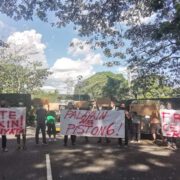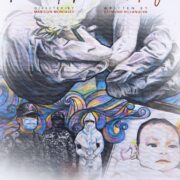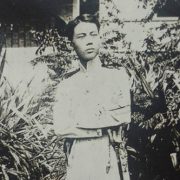How Darkness Lit the Way for a People’s Film Collective (An interview with Sine Sanyata)
By L. S. Mendizabal
“Kung ang artista ay nagsasabing ang sining niya ay para sa taong bayan, kailangang makilala ang taong bayan. At magagawa mo lang kung pupunta ka sa kanila. Kailangan ng integrasyon sa masa,” says multi-awarded writer and human rights activist Bonifacio Ilagan in the short documentary and first ever Sine Sanyata production, Sinipi Kay Boni (2019). (If the artist claims that their art serves the people, they must know the people. To do so, they must go to where the people are. Integration with the masses is necessary). Ominous in mood, poised in its clever storytelling that eschews conventional methods, and armed with a message so clear and sharp that it can cut a fascist, Sinipi has set the tone and style of quite a number of shorts the independent film collective has made since. Though this was not a deliberate artistic choice, as I’ve come to learn, Sine Sanyata’s fearless mission to steer the spotlight in the direction of the persecuted, the often overlooked and unheard, is not lost on the viewer.
“It should always be pro-people—”
“Yes, that’s the basis of all the decisions we make.”
“—And that you should always be somewhat aware of the oppressor while highlighting the oppressed sector.”
“For whom are we doing all this and will continue doing it? That’s it.”
Three of Sine Sanyata’s members, Maricon Montajes, Eric Sister and Juan Carlo Tarobal finished one another’s sentences as they sat with the author on Zoom last Friday to talk about the film collective’s beginnings, current achievements and filmmaking process, among other things.
Starting with a small core group assembled in 2019 by film director and University of the Philippines Film Institute professor, Choy Pangilinan, and friends, the film collective was named after an old Ilokano word, “Sanyata,” which translates to “illumination.” Since March 2020, as the government weaponized a global pandemic, abandoned the people and forced us into isolation, Sine Sanyata has grown to around 15 members who have consistently made videos on the Filipino struggle in the thick of the spread of Coronavirus as well as that of a larger menace, the “veerus” that is Duterte’s fascist authoritarian rule.
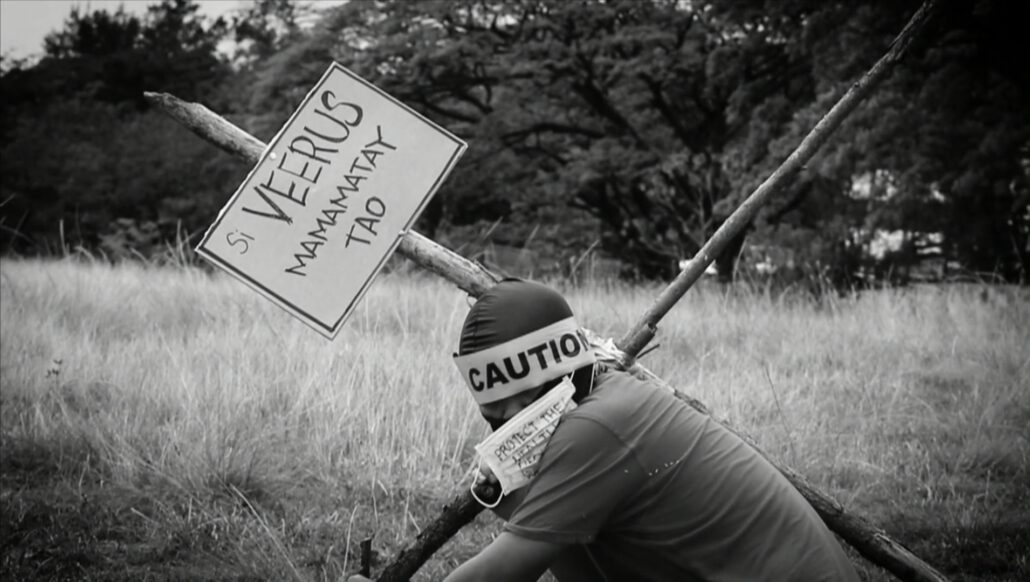
Sine Sanyata’s creative process takes a nontraditional yet organic route. Rather than being dictated by a single director, each project is an amalgamation of artistic visions of the creators involved.
“Depending on the latest people’s issues, we brainstorm. From there, we keep birthing concept after concept until a narrative is formed,” Sister explained.
“The editor makes sure that the collective vision is executed before it goes through another round of collective criticism. In the process, we sort of found a distinct style of our own,” Montajes, who also documents at Kodao, added.
But more than their trademarks of theatrical elements thrown here and there, spiral-like loops of images as if in a dream, raw, unpolished cuts and the recurrence of the color red, Sine Sanyata has also utilized an agitprop format across its productions that is unlike the traditional slogan-heavy material. Defamiliarized themes such as social inequity (the urban poor perspective through playful voice-over narration and animation in Yawyaw), death and sacrifice (both unjust and unnecessary as depicted in Semana Santa which shows the Calvary of the most vulnerable sectors of COVID-ridden society), among others, make their riveting images even more thought-provoking, disturbing, rousing. This skillful marriage of political content and avant-garde technique is what makes Sine Sanyata’s works stand out from the onslaught of #lockdowndiaries videos uploaded online in a time when people isolated from one another are able to choose between entertainment and reality—vloggers’ pranks on YouTube or the endless list of human rights violations on the news, a mother with an RC Cola bottle for a head or a beheaded farmer somewhere in Bulacan. Sine Sanyata gives us the same old bleak news yet in new ways that shake us from our desensitized collective psyche.

It comes as no surprise that the film collective was able to sweep awards in UP’s recently concluded Pag-aalay: webXhibition and Festival, a global online video competition that showcased “stories of resilience, inner strength and humanity of everyday Filipino heroes.” Four out of Sine Sanyata’s seven entries—for which all of the sound design was provided by the group’s very own Jhoc Jacob—garnered the highest recognitions in four categories, namely, Sister’s Obrero (First Prize in “Animation” and “Best Video”), Montajes’ Sining Sandata (First Prize, “Experimental”) and Salugpongan (First Prize, “Documentary”), and Tarobal’s Ang Ating Tsuper (Second Prize, “Documentary”). Their other entries were Nars ng Bayan by Montajes and Tarobal’s Hate of the Nation Address (HONA) and Pandemya at Pag-ibig. All said entries were uploaded to TVUP’s YouTube channel. The rest of Sine Sanyata’s works, meanwhile, can all be viewed for free on YouTube at https://bit.ly/3tKaiGJ and on their Facebook page at facebook.com/sinesanyata.
Obrero captures the Filipino minimum wage earner’s already harsh, precarious working conditions made even worse by the Duterte regime’s anti-people response to the pandemic. Narrated by Kilusang Mayo Uno Secretary-General Jerome Adonis, it pays tribute to the 40 million workers who keep our economy afloat by calling attention to their plight without romanticizing it. Small jeepney drivers and operators are also part of the workers’ population, whose situation during the enhanced community quarantine’s Tigil Pasada took them to the streets, only this time, to beg for money. We see heartbreaking glimpses of this in Ang Ating Tsuper. “Kahit wala na pong ayuda, basta po ibalik lang po ‘yung tradisyunal na jeep lang po, masaya na po kami (It’s okay if we don’t receive government aid, merely lifting the ban on traditional jeepney routes would mean a lot to us),” a driver says before the video cuts to a black screen and nothing else.
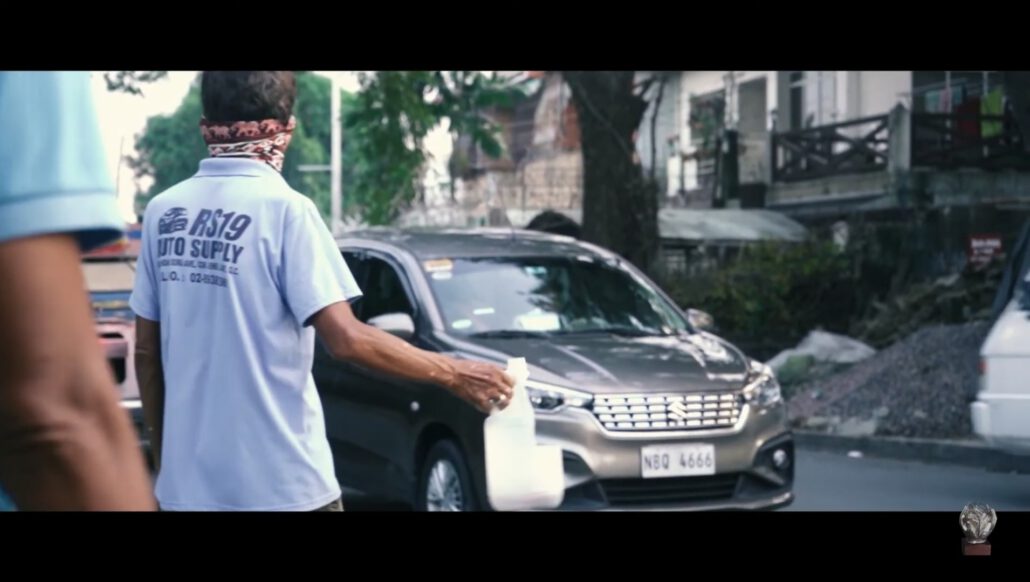
In Salugpongan, we are taken to UP where the Lumad people have sought refuge after enduring constant state-sponsored attacks. Two young girls talk about how they miss their school back in their homeland, how the community maintains a basic healthcare system within the camp and how they have gathered what little resources they have to sew face masks for those in need (“hospitals” and “the homeless” in their own words). This simple, inspiring and impactful little docu shows the viewer how even the most downtrodden are still able to want to help. And as if to encapsulate the objective of all seven of Sine Sanyata’s entries to the video festival, Sining Sandata features social realist painter, printmaker, critic and UP Fine Arts professor, Neil Doloricon, saying that “only when the artist participates in the social movement for change can their art realize its full potential in serving the people.”
These short films couldn’t be more different from one another but Sine Sanyata’s razor-sharp messaging runs through all seven narratives. In a video festival themed heavily around good ol’ Filipino resilience, Sine Sanyata managed to honor that and more. Sister could not have said it better: “Calling our workers “heroes” is music to their ears, sure, but for what? They don’t go to work to become heroes. They labor in order to survive and feed their families.” The film collective has succeeded in making the viewer understand that all of these heroes’ sacrifices will be for naught unless we align ourselves with the marginalized. Sine Sanyata pushed the viewer to see through the art and beyond the screen by mirroring the true state of our nation without resorting to the oft-used roseate filter of peace and Pinoy pride. After all, where is peace and pride in the genocide of the poor?
In Sinipi, Ilagan says, “Propagandista talaga kami. Ang usapin lang diyan, propaganda para saan at para kanino (We are indeed propagandists. The only difference is for what and for whom the propaganda is).” Sine Sanyata is without a doubt a people’s propaganda machine naturally borne of the collective Filipino dissent that state repression tries desperately to silence. History has proven without fail that the oppressed always take up arms to defend themselves. They may take the gun, the pen, the paintbrush, the megaphone, or in this case, the camera. Agitation propaganda is essential in fighting state propaganda—the one that says we should all just obey without question if we do not want to die while they kill us anyway, one by one, but often in batches; the one that blocks public scrutiny of Duterte’s incompetence and terorrism by bombarding us with showbiz controversies or a young Pacquiao rapping in Ebonics. There is an ongoing war to win the hearts and minds of the masses. Sine Sanyata’s body of work, marked by courage and genuine inspiration from the people with the intent to give back to the people, is the kind of filmmaking that we need now. And especially now.
When asked how they were able to make all these productions possible while on lockdown, Sister shared that a few of them would find the time to physically meet to brainstorm and shoot, while sharing footages and files were mostly done online.
“At the end of the day, we respect any member’s decision if they can’t go outside because of COVID so we depend on those available for the time being,” Montajes said.
They don’t find the current political climate and health crisis to be serious deterrents in their work, either.
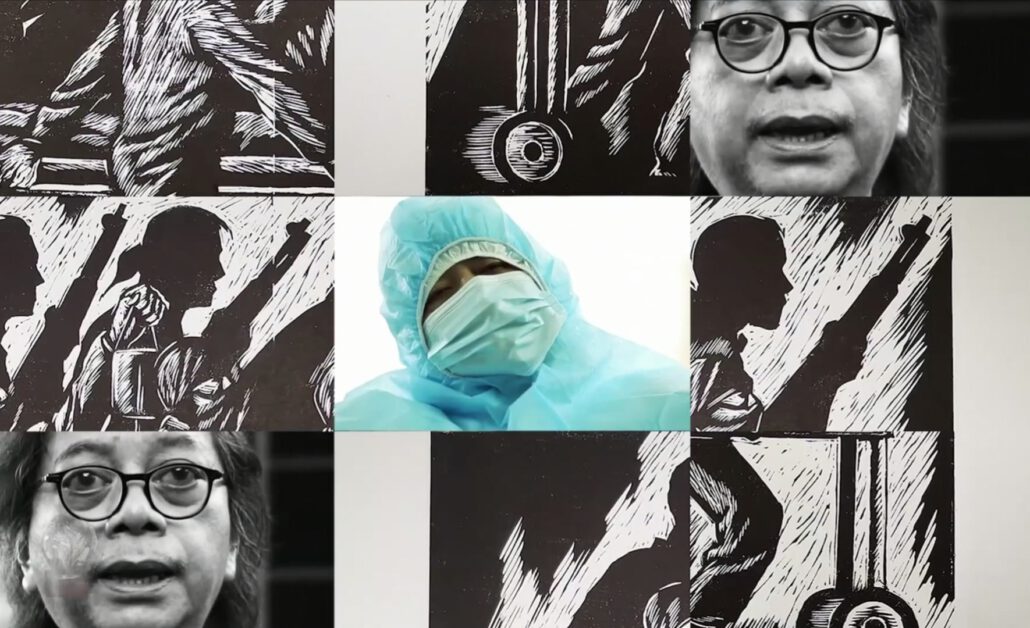
“Of course, when I go home to my wife and children from filming outdoors even though we’ve followed safety protocol to the letter, there’s always that nagging fear: What if I got infected? I just do my best to disinfect thoroughly,” Sister said. Like him, other Sine Sanyata members also have their own families. “Honestly, it’s not that hard during lockdown because it’s almost like everybody genuinely wants to convey their feelings. It’s easy to get people to express their discontent, rage and frustration [with the government]. It’s pretty easy to relate.”
“There are so many stories out there that deserve to be told, so many voices that need to be amplified,” Tarobal added.
“Most filmmakers tend to be individualistic towards their work. There are times when they try to tell a story but make it about themselves instead of actually making it about the subject, which personally pains me. At the same time, it challenges me since we have this privilege of making films like the ones that we do, so I might as well just do it,” Montajes said.
When I asked them if they’re shooting at the moment, Montajes teased that they are in fact currently working on not just one project.
“Abangan mo na lang ang susunod na mga kabanata. Malupit ‘to! (Watch out for the next chapters. They’re going to be fierce!)” Tarobal said in half-jest.
What they can safely say right now, though, is that we can look forward to their first full-length documentary. Clearly, Sine Sanyata is just getting started. #


